
Almost everybody loves lasagna, but it can be time-consuming to prepare. Boiling the noodles is especially inconvenient, and if your children are underfoot, that big pot of boiling water is a potential hazard. You can reduce your prep time and your risk of accidents by pre-soaking your noodles instead of boiling them. It makes preparing lasagna less of a chore and produces an equally good result.
Noodles and Boiling
Like other forms of commercial dried pasta, lasagna is made by mixing up a stiff dough of "durum semolina," an ancient form of wheat dating back thousands of years, which has especially strong gluten strands. The dough makes lasagna noodles have its characteristic pale golden color and pleasantly chewy texture, even after baking. Most recipes specify that you cook your lasagna noodles ahead of time, but that's problematic. They noodles are prone to sticking together in the pot unless you stir regularly, and the more you stir, the more likely they'll break into smaller pieces. Additionally, the noodles are likely to stick together when you drain them. Altogether, it's a step to skip if possible.
The Alternative
Ultimately, your lasagna noodles don't need to be fully cooked ahead of time like other kinds of pasta. They're going to be baked in a sauce that contains a lot of moisture, so they can finish cooking during the baking process. All that's really necessary is that the noodles are softened and pliable, so they're easy to handle. You can soften them by soaking them in boiling water or even in extra-hot tap water.
Soaking
Choose a 9-by-13-inch baking dish or a similarly large and heatproof pan. Place a layer of lasagna noodles in the dish, and angle one noodle across the bottom layer at a diagonal. This extra noodle helps keep the layers of noodles from sticking together. Repeat that process for each additional layer, until you've used all your noodles. Pour boiling water over the noodles, and let them soak for 20 to 30 minutes. If your tap water is very hot, 160 to 180 degrees Fahrenheit, you can use water from your faucet instead of boiling water.
Baking
Drain the noodles when your sauce and other ingredients are ready, and assemble the lasagna dish in the normal manner. If your sauce is relatively loose and liquid, you probably don't need to make any adjustments. If your lasagna recipe uses a relatively thick and pasty sauce, you'll probably need to add a bit of liquid to finish cooking the noodles. Add approximately 1/3 cup of water or -- better yet -- tomato juice to your 9-by-13-inch pan, increasing or reducing that amount for other batch sizes. Bake the lasagna as your recipe directs, then let it rest for 15 to 20 minutes before serving.
Related Articles

How to Boil Pasta Noodles

Can You Substitute Boiled Lasagna ...

When to Add the Noodles in a Crock Pot ...

Can You Boil Water & Cook Spaghetti in ...
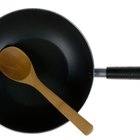
How to Fry Raw Spaghetti

How to Cook Luglug Cornstarch Noodles

How to Cook Lasagna Noodles Al Dente
How to Cook Large Amounts of Noodles ...
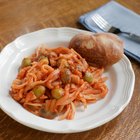
How to Make Crock-Pot Spaghetti

Substitute for Manioc Starch
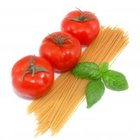
How to Make Spaghetti Noodles

Do You Need to Boil Fresh Egg Pasta for ...

How to Make Homemade Boiled Starch
Easy Baked Ziti Recipe

How Long to Cook Fettuccine for Al ...
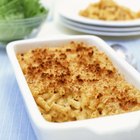
Why Does a Sauce Curdle?

How to Cook & Freeze Spaghetti Noodles

How to Make Tuna and Noodle Casserole
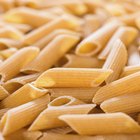
How to Cook Whole Grain Pasta

How to Make a Quick Snack Made of Ramen ...
References
- On Food and Cooking: The Science and Lore of the Kitchen; Harold McGee
Writer Bio
Fred Decker is a trained chef and certified food-safety trainer. Decker wrote for the Saint John, New Brunswick Telegraph-Journal, and has been published in Canada's Hospitality and Foodservice magazine. He's held positions selling computers, insurance and mutual funds, and was educated at Memorial University of Newfoundland and the Northern Alberta Institute of Technology.
Photo Credits
Jupiterimages/Photos.com/Getty Images